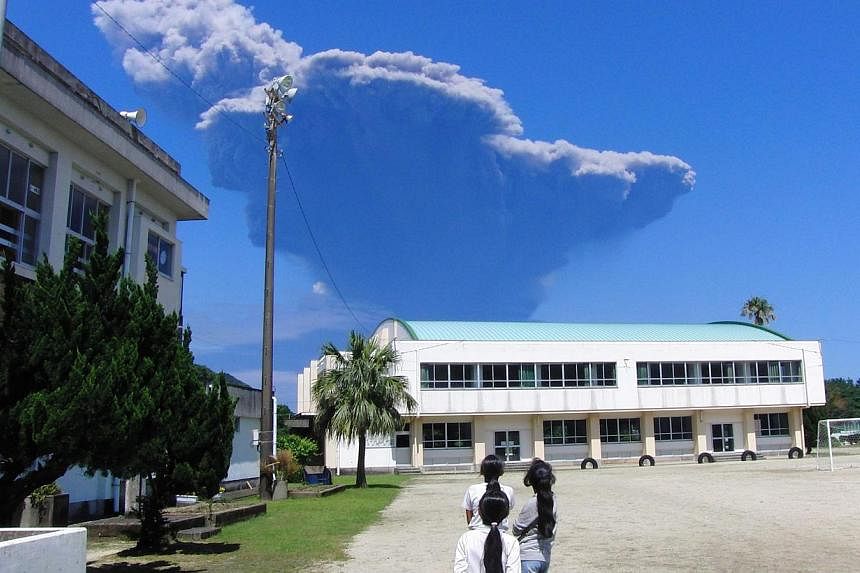TOKYO (REUTERS) - A volcano on the remote southern Japanese island of Kuchinoerabujima erupted suddenly on Friday, blasting plumes of black smoke high into the sky, prompting authorities to order the island's evacuation and forcing airlines to divert flights.
A pyroclastic flow of super-heated gas and rock flowed down the side of Mount Shindake and reached the ocean after the mountain's "explosive" eruption, but officials said there was no danger to human life.
"There was a huge bang and black smoke rose up immediately,"Nobuaki Hayashi, an island official, told NHK television, adding that residents were gathering to await evacuation.
There were no reports of injuries to the roughly 140 residents, whose only access to the outside world is by boat.
Watchful residents gathered on the roof of an evacuation centre, its parking lot packed with cars, as the peak continued to spew out smoke and ash. Smoke billowed some 9,000m into the sky and officials warned of the risk of continuing, possibly large-scale eruptions, calling for "extreme caution".
Ash blanketed part of the mountain's lower slopes and fell on the island's main harbour, turning it grey.
Just before noon, a Coast Guard ship headed for the island to evacuate residents. The closest neighbouring island is Yakushima, roughly one hour to the east.
A military helicopter was also en route, Japanese Prime Minister Shinzo Abe told reporters. The government had set up a disaster management office.
Japan's All Nippon Airways said it would divert some flights to Okinawa and South-east Asia as a precaution, but didn't plan to cancel any. Japan Airlines (JAL) said it did not have any plans to change any of its flights.
Kuchinoerabujima island is about 130 km south of Japan's southernmost main island Kyushu, and roughly 1,000 km southwest of Tokyo. It was not immediately clear if the eruption would affect the restart of Kyushu Electric Power's Sendai nuclear plant, which on Wednesday cleared the last step of the nuclear regulator's stringent safety hurdles introduced after the Fukushima Daiichi disaster in 2011.
The company said an internal analysis showed the erupting volcano posed no risk to the Sendai plant on Kyushu island, and volcanologists agreed.
"Even a large eruption on the island won't pose a risk to the Sendai plant," said Setsuya Nakada, a professor at Tokyo University's Volcano Research Centre.
The island has been the site of several previous eruptions, including one in 1933 that killed several people. Mount Shindake erupted last summer and the area where that pyroclastic flow occurred has been off limits since then, with the peak under a warning level of 3 on the Japanese scale of 1 to 5. It was raised to 5 after the eruption.
Japan is one of the world's most seismically active nations and there has been an upsurge in volcanic activity in recent weeks, with increasing volumes of steam blasting from a resort area not far from Tokyo and activity levels rising at a volcano in central Japan.
In September 2014, 63 people were killed when Mount Ontake in central Japan erupted without warning while packed with hikers.

